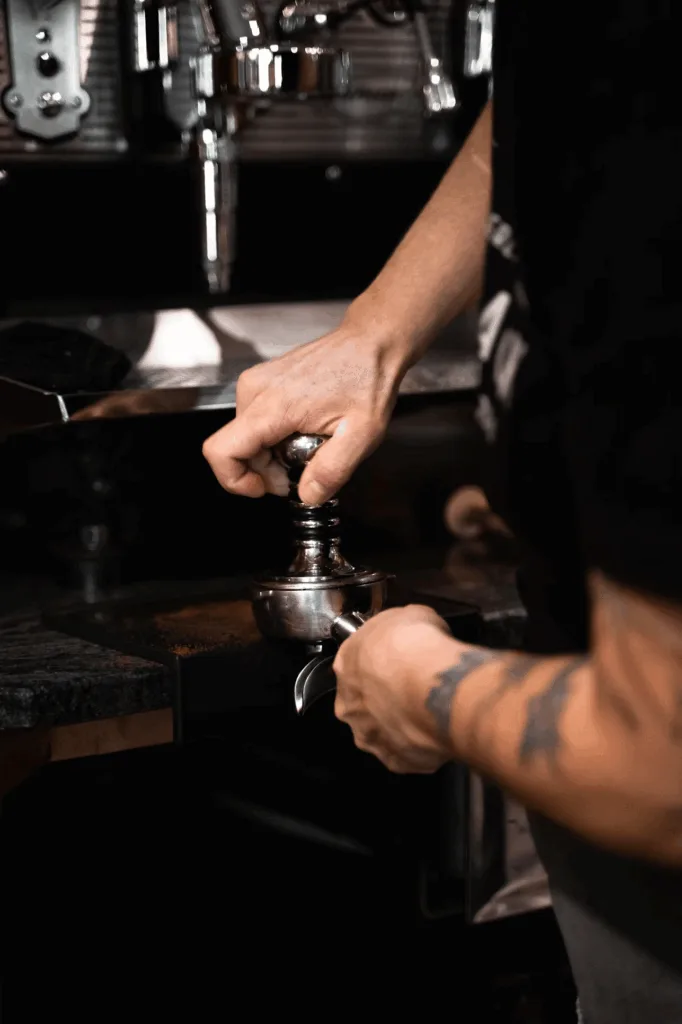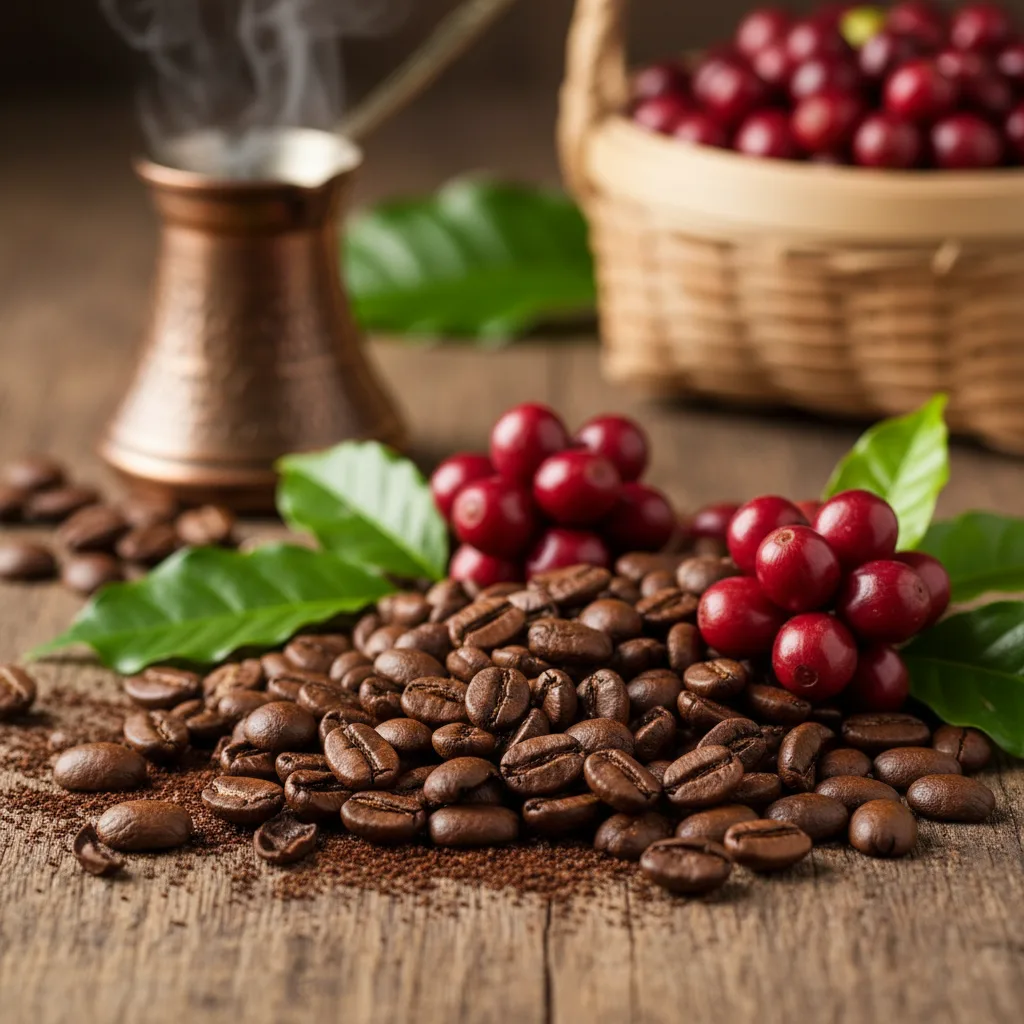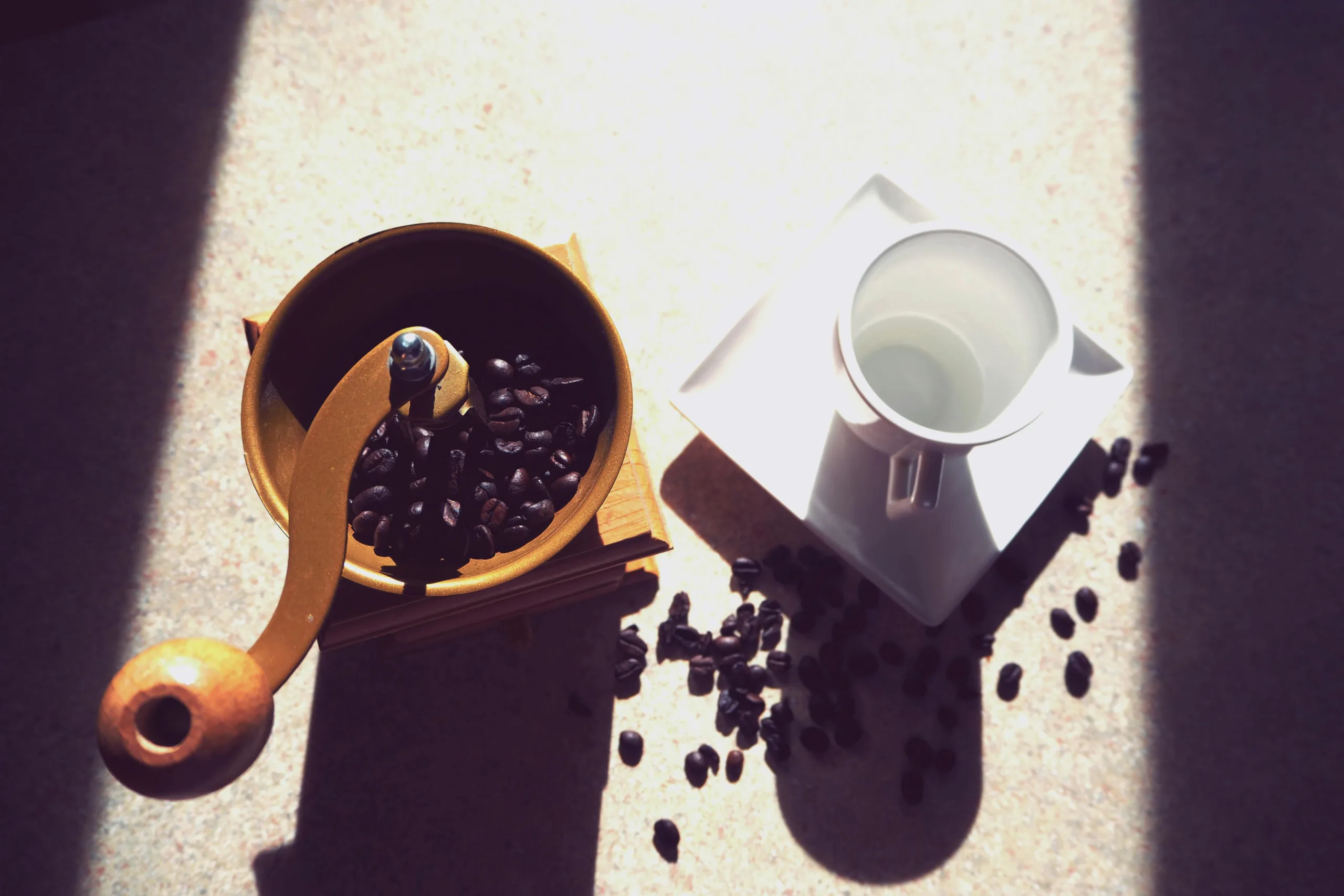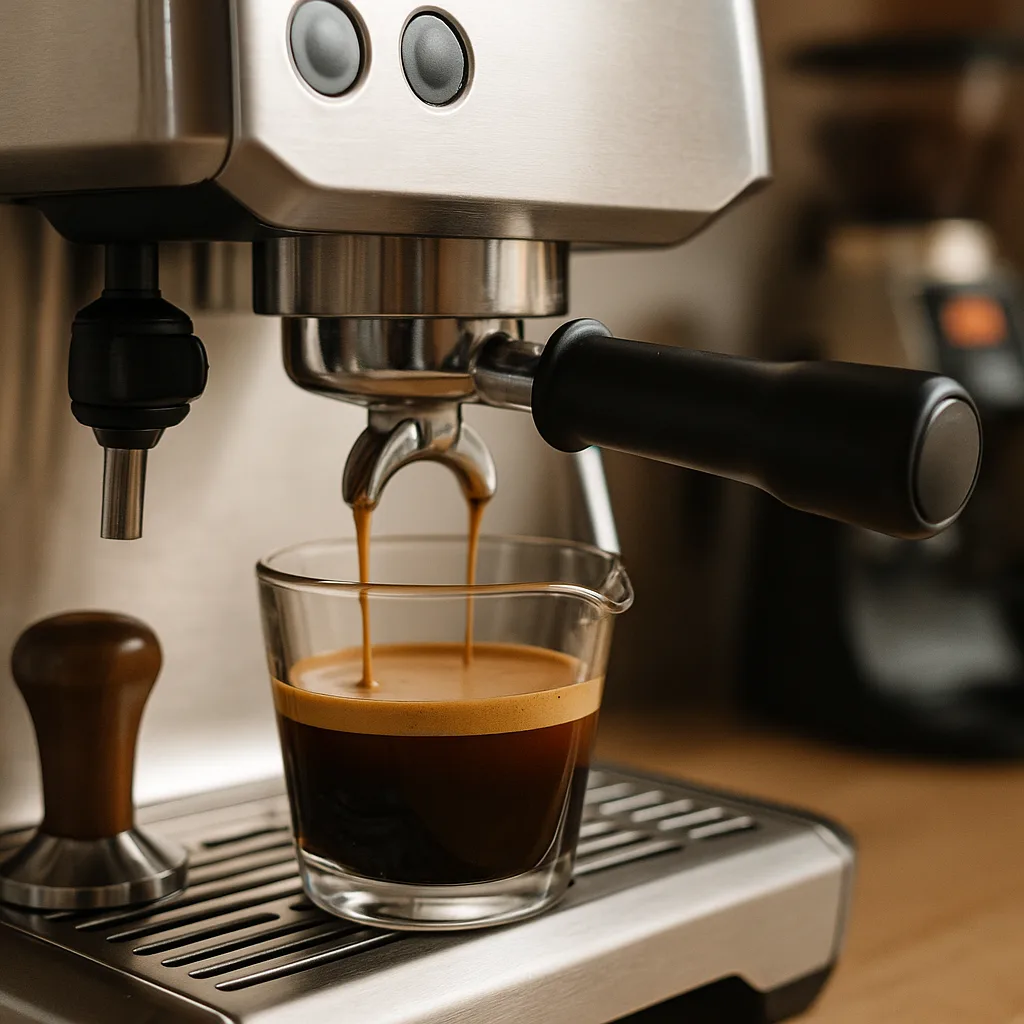Table of Contents
Picture this: you’re standing in your kitchen at 7 AM, portafilter in hand, watching dark liquid flow from your espresso machine. The stream starts thick and syrupy, then gradually lightens to a golden honey color. You stop the shot at 25 seconds, take a sip, and… it’s either liquid gold or a bitter disappointment. What made the difference? Espresso extraction – the magical (and scientific) process that transforms ground coffee beans into that perfect shot you’re craving.
I’ve been down this rabbit hole for years, and I can tell you that understanding extraction is the difference between brewing café-quality espresso at home and wondering why your shots taste like disappointment in a cup. The good news? Once you grasp the basics, you’ll have the confidence to dial in shots that rival your favorite coffee shop.
Key Takeaways
- Espresso extraction is the process of dissolving soluble compounds from coffee grounds using hot water under pressure
- Optimal extraction typically occurs between 18-22% extraction yield, taking 25-30 seconds for a double shot
- Under-extraction leads to sour, weak shots while over-extraction creates bitter, harsh flavors
- Grind size, dose, and timing are your three main tools for controlling extraction
- Visual and taste cues help you identify when your extraction is dialed in perfectly
The perfect espresso extraction creates a steady flow with rich, golden crema
Understanding Espresso Extraction: The Science Made Simple
Let’s break down what’s actually happening when you pull an espresso shot. Espresso extraction is essentially a controlled chemical reaction where hot water (around 200°F) dissolves the soluble compounds from your ground coffee beans. Think of it like making tea, but with intense pressure (9 bars) and precise timing.
When water hits your coffee grounds, it starts pulling out different compounds in a specific order:
- Acids and salts (first 10 seconds) – These give brightness and complexity
- Sugars and oils (middle phase) – These provide sweetness and body
- Bitter compounds (final phase) – These add depth but can overwhelm if extracted too long
The magic happens when you capture just the right balance of these elements. Too little extraction and you miss the sweetness. Too much and those bitter compounds take over your cup.
The Chemistry Behind Great Espresso
Here’s where it gets interesting – only about 18-22% of your coffee grounds are actually soluble. The rest is cellulose and other plant matter that stays behind. Your goal is to extract the good stuff while leaving the harsh, bitter compounds locked in the grounds.
Water temperature plays a huge role here. Too hot (above 205°F) and you’ll pull out bitter tannins. Too cool (below 190°F) and you won’t extract enough of those delicious sugars and oils. Most quality espresso machines maintain that sweet spot automatically.
The Factors That Control Your Espresso Extraction
Now that you understand what extraction is, let’s talk about how to control it. I like to think of extraction as having three main dials you can adjust:
Grind Size: Your Primary Extraction Control ⚙️
Grind size is your most powerful tool for controlling extraction speed. Here’s the simple rule:
- Finer grind = slower water flow = more extraction = stronger, more bitter shots
- Coarser grind = faster water flow = less extraction = weaker, more sour shots
Most home baristas start here when their shots taste off. If your espresso tastes sour or weak, try grinding a bit finer. If it’s bitter or harsh, go coarser.
The perfect espresso grind should feel like fine sand between your fingers
Dose: How Much Coffee You’re Using
Your dose (the amount of coffee in your portafilter) directly affects extraction strength. Standard doubles use 18-20 grams, but you might need to adjust based on your basket size and taste preferences.
More coffee means:
- Slower flow (if you don’t adjust grind)
- More concentrated flavors
- Higher extraction potential
Time: The Extraction Window
Most espresso shots should extract in 25-30 seconds for a double shot. This timing gives you that balanced extraction we’re after. But remember – time is just an indicator. What really matters is how your shot tastes.
Recognizing Perfect Espresso Extraction
So how do you know when you’ve nailed it? Here are the signs I look for:
Visual Cues 👀
Perfect extraction flows like warm honey:
- Starts dark and thick
- Gradually lightens to golden brown
- Maintains a steady, consistent stream
- Creates a rich, tiger-striped crema
Taste Indicators
A well-extracted shot should taste:
- Balanced – not too sour, not too bitter
- Sweet – natural coffee sugars shine through
- Complex – multiple flavor notes working together
- Clean – no harsh aftertaste
“The perfect espresso shot is like a symphony – every element in harmony, with no single note overpowering the others.”
The National Coffee Association (NCA) notes that while all coffee beans share the same origins, differences in roast level and grind size create distinct flavor outcomes for espresso versus brewed coffee.
Common Extraction Problems and How to Fix Them
Let me share some troubleshooting tips I’ve learned through countless imperfect shots:
Under-Extraction: When Your Shot Tastes Sour 😬
Symptoms:
- Sour, acidic taste
- Weak body
- Shot pulls too fast (under 20 seconds)
- Thin, light-colored crema
Solutions:
- Grind finer
- Increase dose slightly
- Check water temperature
- Ensure even tamping
Over-Extraction: When Bitterness Takes Over 😤
Symptoms:
- Bitter, harsh flavors
- Astringent aftertaste
- Shot pulls too slow (over 35 seconds)
- Dark, thick crema
Solutions:
- Grind coarser
- Reduce dose slightly
- Check for channeling
- Improve distribution technique
| Problem | Likely Cause | Quick Fix |
|---|---|---|
| Sour taste | Under-extraction | Grind finer |
| Bitter taste | Over-extraction | Grind coarser |
| Weak shot | Low dose/coarse grind | Increase dose, grind finer |
| Slow flow | Too fine/high dose | Grind coarser, reduce dose |
A well-organized home espresso setup makes dialing in extraction much easier
The Role of Coffee Beans in Extraction
Your beans play a huge role in how extraction behaves. Here’s what I’ve learned about different variables:
Roast Level Impact
- Light roasts extract slower, need finer grinds or longer times
- Dark roasts extract faster, often need coarser grinds
- Medium roasts offer the most forgiving extraction window
Bean Age and Freshness
Fresh beans (2-14 days post-roast) extract differently than older beans. Fresher coffee often needs slightly coarser grinds as CO2 helps with extraction.
Origin Characteristics
Different coffee origins have varying densities and solubility. Ethiopian beans might extract differently than Brazilian ones, even at the same roast level.
For more insights on choosing the right beans for your extraction goals, check out our comprehensive coffee guides.
Tools and Equipment for Better Extraction
Having the right tools makes dialing in extraction much easier:
Essential Equipment 🛠️
- Quality grinder – Consistent particle size is crucial
- Scale – Precision matters for dose and yield
- Timer – Track your extraction times
- Tamper – Even compression prevents channeling
Nice-to-Have Upgrades
- Distribution tool – Ensures even coffee bed
- Bottomless portafilter – Helps diagnose extraction issues
- Refractometer – Measures extraction percentage scientifically

Common Myths About Espresso Extraction
Let me bust some myths I hear all the time:
Myth: “Darker roasts are stronger”
Reality: Dark roasts extract faster but aren’t necessarily stronger – they’re just more bitter.
Myth: “Expensive machines automatically make better shots”
Reality: Technique and understanding matter more than price tags.
Myth: “There’s one perfect recipe for all coffees”
Reality: Every bean is different and needs individual dialing in.
Our equipment comparison guides can help you understand what features matter most for extraction control.

The Future of Espresso Extraction
The espresso world keeps evolving. Here’s what’s exciting me in 2025:
Smart Technology Integration
- Apps that track your extraction data
- Machines with built-in shot analysis
- AI-assisted grind recommendations
Sustainable Extraction Practices
- Techniques that maximize bean utilization
- Lower-pressure extraction methods
- Energy-efficient brewing technologies
Precision Tools for Home Baristas
- Affordable refractometers
- Real-time flow rate monitors
- Temperature-stable brewing chambers
As highlighted by European Coffee Trip, the rise of single-origin espresso and direct-trade sourcing reflects a growing interest in transparency and flavor diversity among today’s coffee enthusiasts.
Building Your Extraction Knowledge
Want to dive deeper? Here are my favorite ways to keep learning:
- Practice daily – even bad shots teach you something
- Join online communities – share your shots and get feedback
- Visit quality cafés – taste what great extraction should be
- Read brewing research – the science keeps evolving
For ongoing education and community discussions, our FAQ section covers many common extraction questions from fellow home baristas.
Conclusion
Understanding espresso extraction transforms you from someone who makes coffee into someone who crafts it. You now know that extraction is the controlled dissolution of coffee compounds, that grind size is your primary control, and that balance – not strength – is the goal.
The journey from sour, under-extracted shots to bitter, over-extracted disasters to that perfect, balanced cup is one every home barista takes. The difference is that now you have the knowledge to make that journey shorter and more intentional.
Your next steps:
- Start with consistency – nail your basic technique before getting fancy
- Taste intentionally – every shot is a learning opportunity
- Keep notes – track what works with different beans and settings
- Be patient – great extraction skills develop over time
Remember, the goal isn’t to become a coffee scientist (unless you want to). It’s to brew café-quality espresso at home with confidence. Every perfectly extracted shot is a small victory worth celebrating.
Ready to put this knowledge into practice? Start with your next shot. Pay attention to the flow, taste the result, and make one small adjustment. That’s how extraction mastery begins – one intentional shot at a time.
For more espresso insights and equipment recommendations, explore our full collection of brewing guides and reviews designed to help you brew with confidence, no fluff included.
Frequently Asked Questions (FAQs): Espresso Extraction
What does espresso extraction actually mean?
Espresso extraction is the process of using hot, pressurized water to dissolve flavorful compounds from finely ground coffee. It’s a balance of time, pressure, and temperature, where your goal is to extract the right mix of acids, sugars, and oils for a balanced shot
How long should a proper espresso extraction take?
A well-extracted double shot typically runs 25–30 seconds, yielding about 36 grams of espresso. Timing helps ensure you’ve extracted the ideal 18–22% of soluble compounds — enough for full flavor without bitterness.
Why does my espresso taste sour or bitter?
Sour espresso usually means under-extraction — the water passed through too quickly or the grind was too coarse. Bitter espresso signals over-extraction, caused by too fine a grind or overly long shot times. Adjusting grind size and shot time usually fixes both problems.
What factors affect espresso extraction the most?
The three key variables are grind size, dose, and extraction time. Temperature and pressure also play important roles, but consistency in grind and dosing has the biggest impact on your shot’s flavor.
Can different coffee beans affect extraction?
Absolutely. Roast level, bean origin, and freshness all influence how easily coffee extracts. Light roasts need finer grinds and longer extractions; darker roasts extract faster and can turn bitter quickly. Always adjust your recipe based on the beans you’re using.








Leave a Reply
You must be logged in to post a comment.